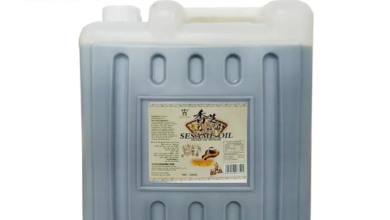Facts About Jilo Virals

There is a lot of misinformation about jilo virals circulating on the internet. Here are some facts about jilo virals that will help you sort out the myths from the truth. Jilo virals are a virus that can infect plants, animals, and humans. They are classified as a member of the family Rhabdoviridae. Jilo virals are named after the genus of the plant they were first isolated from, Jilo.
There is no specific treatment for jilo virals. However, infected plants can be treated with insecticides to kill the leaf hoppers and prevent the spread of the virus. Infected animals can be treated with antibiotics. There is no specific treatment for jilo virals in humans, but the symptoms can be treated with over-the-counter medications.
What Are Jilo Virals?
A Jilo viral is a type of virus that is spread through social media platforms. The name comes from the platform on which it was first discovered, Jilo. Also, it is believed that this type of virus is spread by sharing links or files between users.
Jilo virals can cause various plant symptoms, from mild leaf discoloration to complete plant death. In animals, jilo virals can cause encephalitis (inflammation of the brain) and death. In humans, jilo virals can cause flu-like symptoms, such as fever, headache, and muscle aches.
One of the most recent examples of a Jilo viral is the Ice Bucket Challenge. This challenge involved people pouring a bucket of ice water over their heads and then challenging others to do the same. However, the challenge went viral on social media, with many people participating.
While the Ice Bucket Challenge was a harmless way to raise awareness for a good cause, other examples of Jilo virals have been much more harmful. In 2012, a Jilo viral spread a fake story that the world would end on December 21st. This led to many people panicking and some even harming themselves.
Also, it’s important to be aware of Jilo virals’ dangers and think twice before sharing any links or files. If you need clarification on whether something is safvirals’e, it’s always better to err on caution.
What Is The Natural History Of Jilo Virals?
The Jilo virus is a common virus that affects the respiratory system. It is a member of the picornavirus family and is related to the common cold. The Jilo virus is spread through connection with an infected person’s respiratory secretions, such as saliva, mucus, or blood. Also, it can be disseminated through contact with things or textures contaminated with the virus. However, the Jilo virus generally spreads during winter when respiratory infections are more common. Visit Naa Songs to find out more information
The Jilo virus is a typical virus that influences the respiratory system. Also, it is a member of the picornavirus family and is related to the common cold. The Jilo virus is spread through contact with an infected person’s respiratory secretions, such as saliva, mucus, or blood. It can be spread through connection with objects or surfaces contaminated with the virus. The Jilo virus normally circulates during winter when respiratory infections are more common.
Most people infected with the Jilo virus will recover without complications. However, some people may develop a more severe illness, such as pneumonia. Pneumonia is a serious lung infection that can be deadly. The elderly, young children, and people with weakened immune systems are at the highest risk for developing pneumonia from the Jilo virus.
If you think you have been infected with the Jilo virus, it is important to see a doctor as soon as possible. However, there is no specific treatment for the virus, but your doctor can provide supportive care to help you recover. In severe cases, hospitalization may be necessary. With prompt treatment, most people who develop pneumonia from the Jilo virus will fully recover.
What Are The Clinical Features Of Jilo Virals?
There are many different types of Jilo virals, each with its clinical features. However, some of the more common clinical features of Jilo virals include:
-Fever
-Body aches
-Fatigue
-Headache
-Nausea
-Vomiting
-Diarrhea
-Rash
These are just some of the more common clinical features of Jilo virals. However, each person may experience different symptoms, and some people may not experience any symptoms at all.
What Is The Treatment For Jilo Virals?
The Jilo virus is a dangerous and highly contagious virus that can cause severe respiratory illness in humans. However, there is no specific treatment for the Jilo virus, and it is important for people infected with it to seek medical attention immediately. The virus normally spreads through contact with an infected person’s respiratory secretions, such as saliva, mucus, or blood. It can be circulated through communication with contaminated textures, such as doorknobs, entrance handles, or countertops.
The Jilo virus can cause severe respiratory illness, including pneumonia, and can be fatal in some cases. Early diagnosis and treatment of the Jilo virus are essential to preventing serious health complications.
FAQ
What Is The Prognosis For Jilo Virals?
However, the prognosis is generally good. With early diagnosis and treatment, most people with Jilo virals recover fully.
What Is The Epidemiology Of Jilo Virals?
The epidemiology of Jilo virals is studying how these viruses are spread and how they affect people. Jilo virals are a virus that can cause severe illness, including death, in humans. There is no known cure for these highly contagious viruses.
What Are The Risk Factors For Jilo Virals?
There are many risk factors for Jilo virals. Some of the most common include contact with contaminated surfaces and close contact with an infected person. And also exposure to the virus through the air. Other risk factors include having a weakened immune system and being a pregnant woman.
Last Thought
Please contact a healthcare professional for more information on Jilo virals and their clinical features. If you have questions about Jilo Virals, feel free to comment below.





